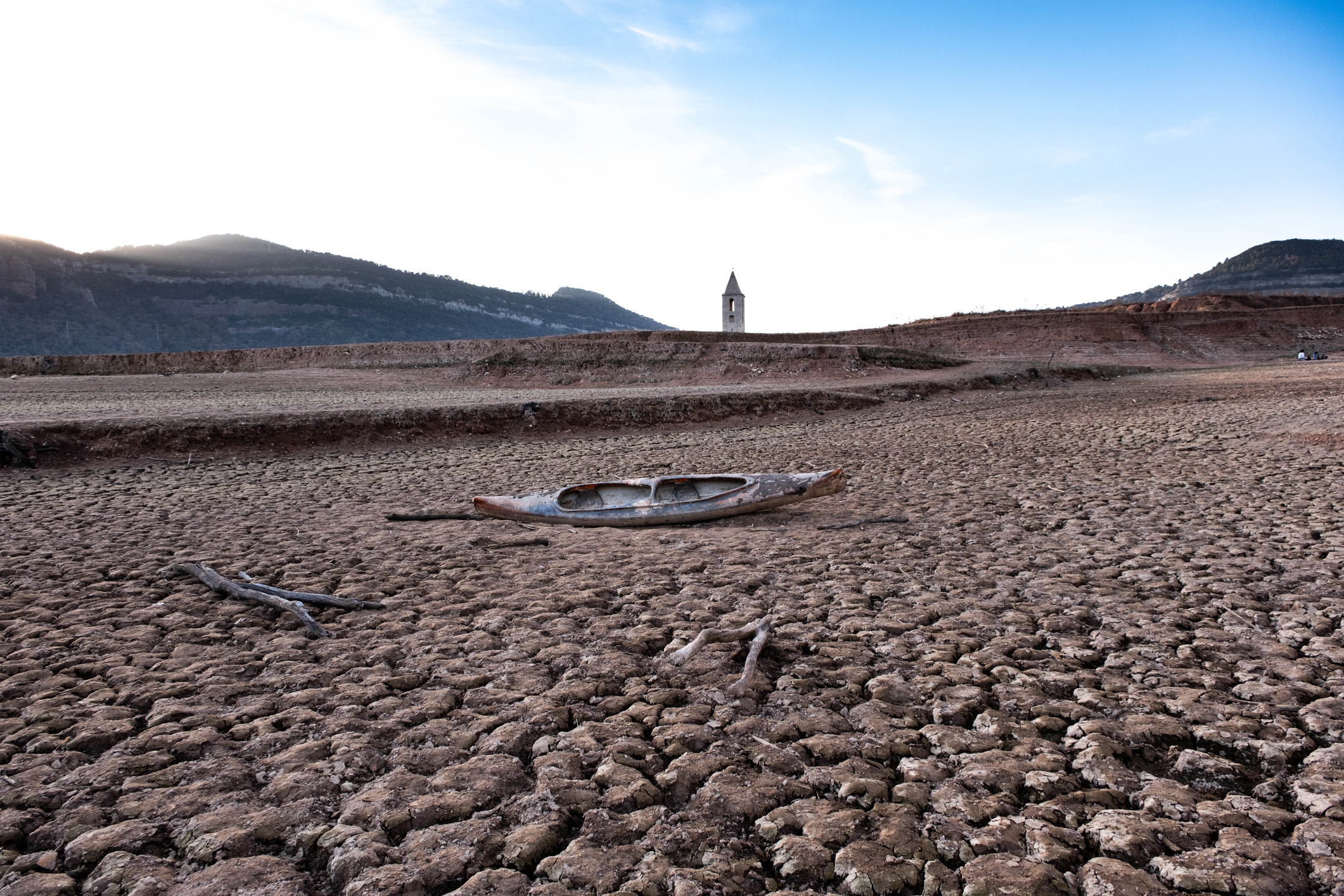Sunlight reflection methods (SRM) – also known as solar geoengineering – might help if used as a complement to other climate policies. However, they might undermine emissions cuts, fail at some point, or disrupt international relations. Reducing these risks will be a key challenge of SRM governance.
SRM might help if used wisely, but that is a big if…
Many of the risks of climate change are driven by rising temperatures, and sunlight reflection methods (SRM) – or solar geoengineering – might greatly reduce those risks if used wisely to complement other climate policies. But that is a big if.
The world’s response to climate change has been far from perfect. Many countries are making very slow progress on emissions cuts, and some are downplaying or even denying the realities of climate change.
On top of this, geopolitical tensions between countries are high, and international institutions are struggling to get them to work together.
There are several ways in which SRM might go wrong if it is not governed well.
Learn more
Could SRM undermine emissions cuts?
Many experts fear SRM could undermine the crucial work of cutting emissions. They worry that it could be used as an excuse to delay climate action and continue burning fossil fuels. This is an important concern.
If the world abandoned emissions cuts and instead relied instead on SRM to cool the planet, the climate problem would not be solved. Ever larger amounts of SRM would be needed, with ever greater risks and side effects. Ocean acidification would go unaddressed and would continue to worsen. This would leave future generations with an ever-growing carbon debt that would be very difficult to get out of.
While SRM might help reduce some risks, it does not address the underlying cause – the build-up of carbon dioxide (CO2) and greenhouse gases. The only sustainable way to stop climate change getting worse is to eliminate CO2 emissions, and the only sustainable way to drive global temperatures down is to remove CO2 from the atmosphere.
Delaying the essential work on emissions cuts and carbon dioxide removal would diminish the effectiveness of SRM and raise other risks, while committing future generations to managing the world’s carbon legacy for longer.
Could SRM undermine emissions cuts?
Sunlight reflection methods (SRM) could cool the planet, but there are fears it could delay progress on emissions cuts and carbon removal.
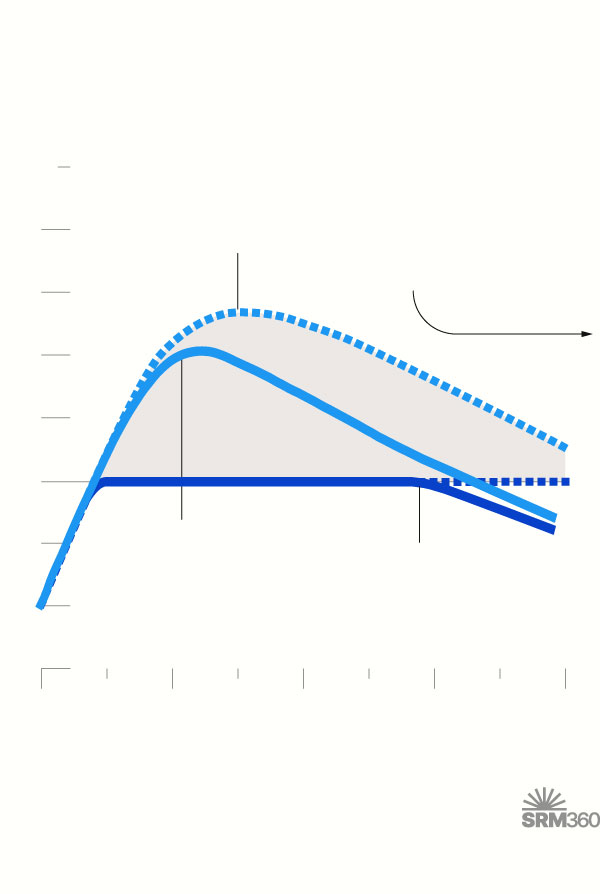
GLOBAL TEMPERATURE INCREASE
IF SRM DELAYS PROGRESS
Delays would also commit future generations to SRM (or global warming) for longer.
Delaying emissions cuts would increase the amount of cooling needed from SRM.
4.0°C
3.5
3.0
2.5
2.0
1.5
Climate policy without SRM
1.0
Climate policy with SRM
0.5
0
2000
2100
2200
2300
2400
Source: Based on Boselius et al. (2025), Oxford Open Climate Change
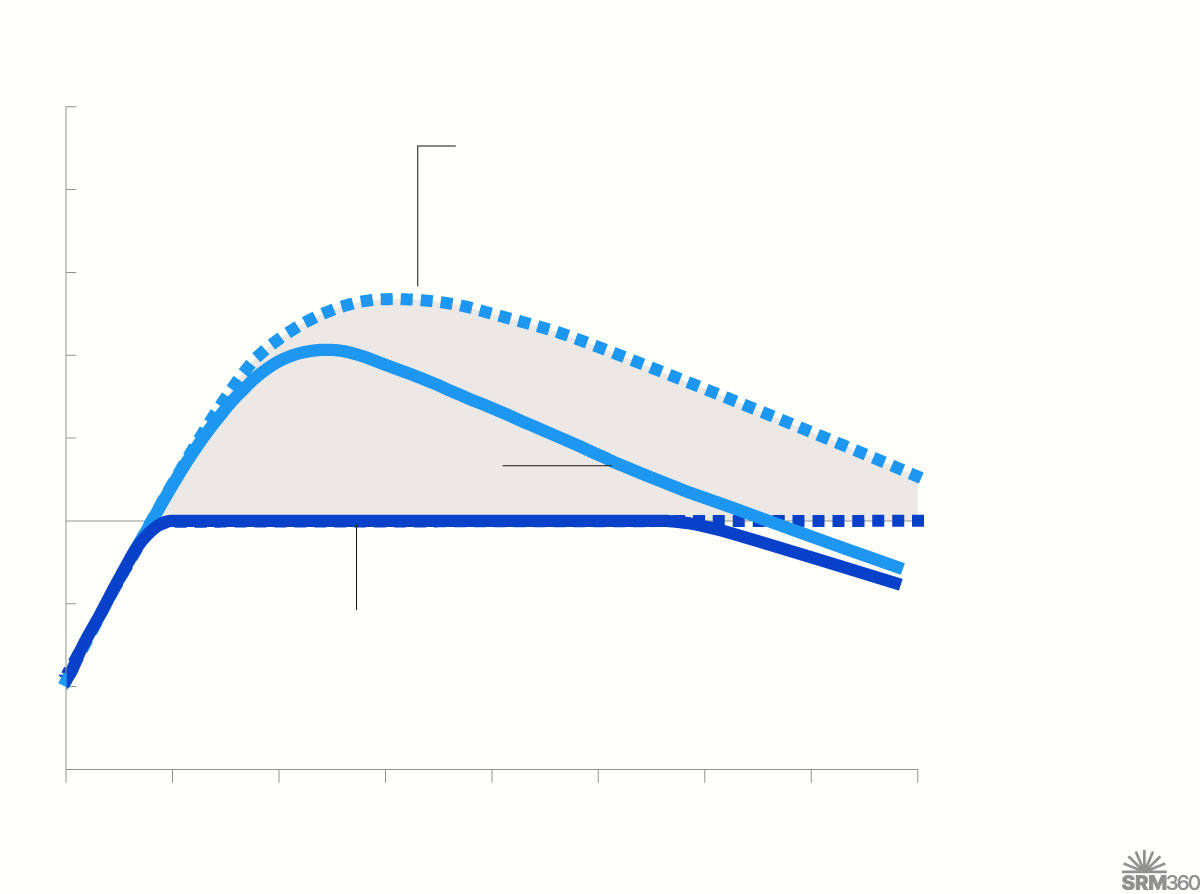
GLOBAL TEMPERATURE INCREASE
4.0°C
IF SRM DELAYS PROGRESS
Delaying emissions cuts would increase the amount of cooling needed from SRM.
3.5
Delays would also commit future generations to SRM (or global warming) for longer.
3.0
2.5
Climate policy without SRM
2.0
1.5
1.0
Climate policy with SRM
0.5
2000
2050
2100
2150
2200
2250
2300
2350
2400
Source: Based on Boselius et al. (2025), Oxford Open Climate Change
Termination shock: what if the cooling stopped?
All SRM approaches only provide temporary cooling. If they were stopped, the warming they offset would rapidly return.
If the cooling effect was large enough, this “termination shock” could be devastating. The climate would warm at a faster rate than it would have without SRM, giving societies and ecosystems less time to adapt.
Termination shock
Sunlight reflection methods (SRM) only provide a temporary cooling effect, which would need to be maintained for decades to offset global warming.
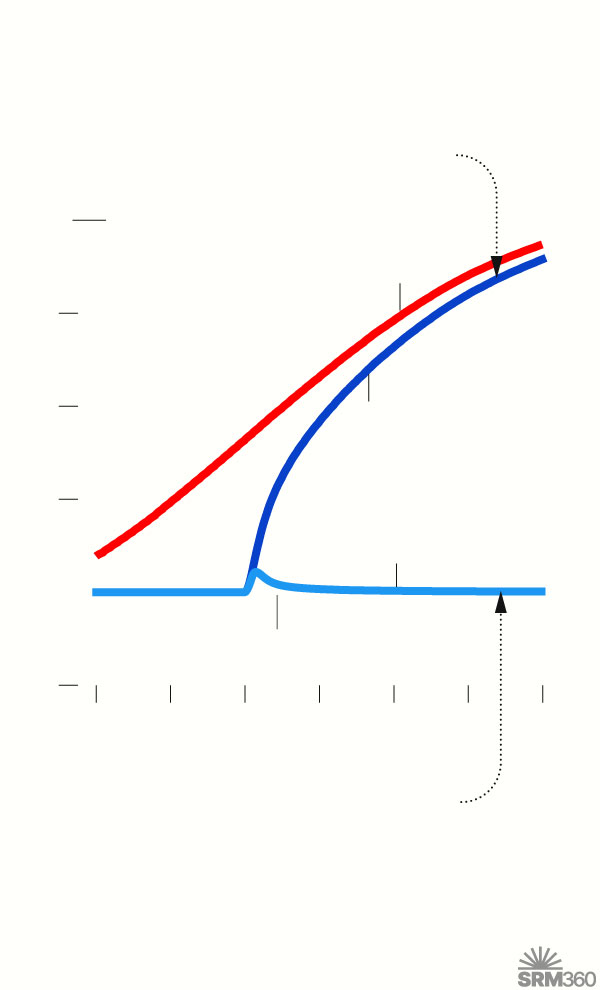
GLOBAL TEMPERATURE INCREASE
If SRM deployment suddenly and permanently stopped, temperatures would rapidly rise in what’s called a “termination shock”.
3.5°C
No SRM
3.0
2.5
SRM interrupted indefinitely
2.0
SRM interrupted for 1 year
1.5
SRM continues
1.0
2040
’50
’60
’70
’80
’90
2100
But, if the deployment were restarted within a few months, this rapid warming could be avoided.
Source: Based on results from Farley et al. (2024), Environmental Research Climate
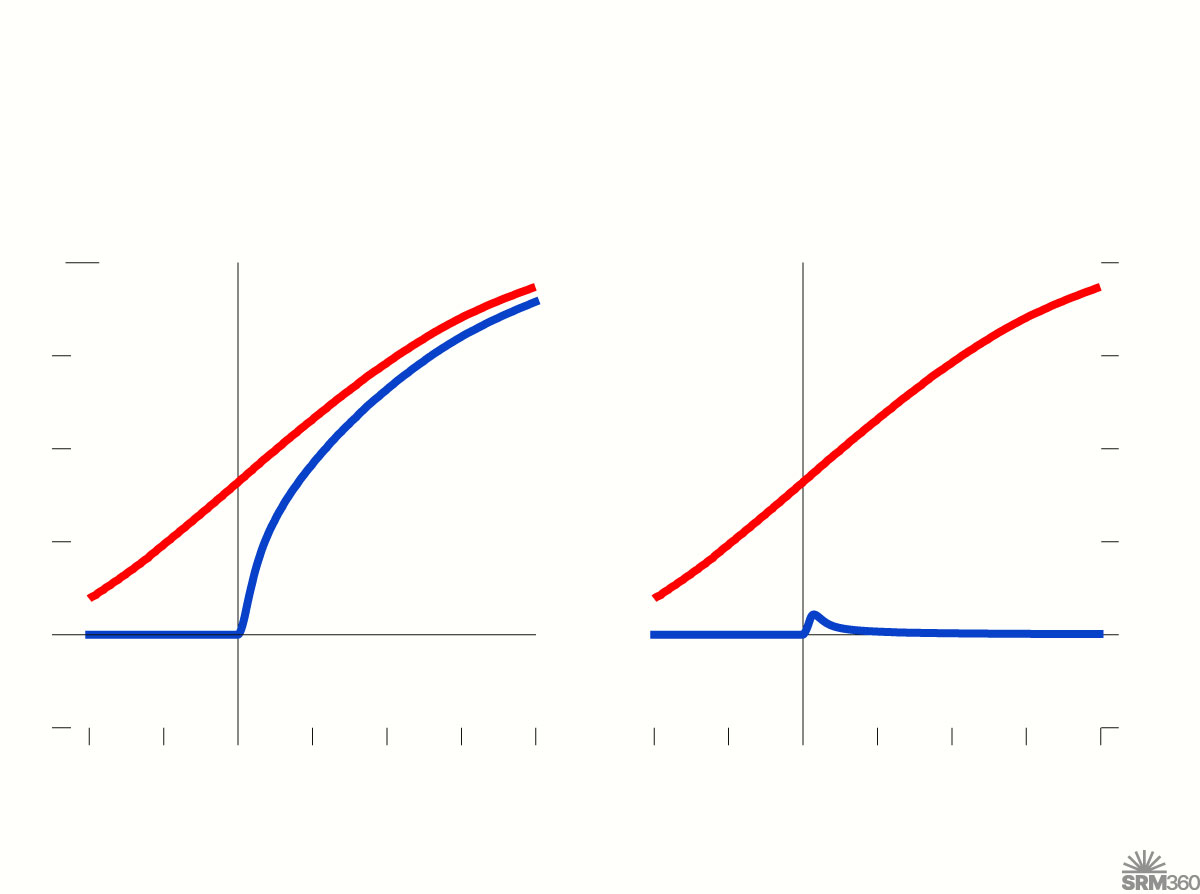
GLOBAL TEMPERATURE INCREASE
But, if the deployment were restarted within a few months, this rapid warming could be avoided.
If SRM deployment suddenly and permanently stopped, temperatures would rapidly rise in what’s called a “termination shock”.
3.5°C
3.5°C
No SRM
No SRM
3.0
3.0
2.5
2.5
SRM interrupted indefinitely
SRM interrupted for 1 year
2.0
2.0
1.5
1.5
1.0
1.0
2040
’50
’60
’70
’80
’90
2100
2040
’50
’60
’70
’80
’90
2100
Source: Based on results from Farley et al. (2024), Environmental Research Climate
If SRM were deployed at large scale, the world would need to take great care to maintain it, and to restore it if it were ever disrupted. Like the internet or the electric grid, which societies now depend on, SRM would become one of the most critical pieces of infrastructure in the world.
Whose hand would be on the thermostat?
One of the troubling things about SRM is that the power to alter the climate could be held by a single powerful country. While it appears SRM could not be used as a climate weapon, it might be deployed for selfish reasons rather than to advance the global public good.
Any decision to deploy SRM would entail difficult choices. How much cooling should be applied? Should global warming be slowed, completely stopped, or driven into reverse? And where should be cooled most? Should the poles be cooled more than the tropics or vice versa?
There are no “right” answers to these questions. Any deployment of SRM would lead to different risks across the world, meaning that countries could have very different views about how, or even if, SRM should be deployed.
The blame game and the risk of conflict
Attributing the effects of SRM deployment would be challenging – especially in the initial years – and could lead to accusations of harm and even conflict. What if a country experienced a record-breaking drought shortly after a deployment started? Regardless of whether this was intended by the deployer, a side effect of deployment, or would have been worse without SRM, the affected country may blame SRM for this drought.
Countries that believe they have been harmed by SRM – rightly or wrongly – might feel compelled to respond with sanctions or even to declare war.
Without a robust scientific understanding of the effects of SRM and a trusted mechanism for resolving disputes and claims of harm, the potential for misunderstandings and conflict would be high.
The need for assessment and governance
Used wisely, SRM might offer an effective means of reducing the risks of climate change while other climate policies are implemented. However, if it undermines those other efforts or heightens international tensions, it could lead to disaster.
To understand their options, policymakers will need to weigh the full risks of SRM against the full risks of climate change without it, and to understand how this balance would play out in different regions. Such risk-risk assessments will be an essential component of good governance, but they will not be sufficient on their own.
Good governance could help ensure this technology is studied and developed responsibly and reduce the risks of it being misused, undermining emissions cuts, or heightening international tensions.
